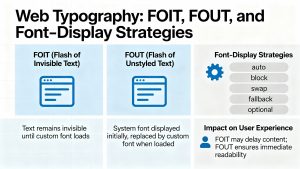Introduction to JavaScript Bundlers
Modern JavaScript applications are no longer a single HTML, CSS, and JS file. They consist of dozens (if not hundreds) of modules, dependencies, and assets that need to be combined and optimized for performance. This is where bundlers come in. They package your code efficiently for browsers to load and execute quickly.
Over the years, Webpack has been the dominant force, powering apps built with React, Angular, and Vue. However, with web projects growing in complexity, developers demanded faster builds, better HMR (Hot Module Replacement), and an overall smoother developer experience.
Enter Vite and Turbopack, the next-generation bundlers designed to push performance limits. Built with modern technologies like ESBuild, Rust, and native ESM (ECMAScript Modules), they promise lightning-fast dev servers and instant reloads.
In this blog, we will break down what each of these bundlers does, how they differ, show some hands-on code examples, and help you decide which tool best fits your workflow.
What Is Webpack?

Webpack is the veteran JavaScript bundler that has been around since 2012. It was the first tool to allow complex dependency graphs for JavaScript, CSS, images, and other assets, bundling them into optimized static files for production.
It’s plugin-based, highly configurable, and used in almost every enterprise-scale web project.
Example: A Simple Webpack Configuration
Here’s what a basic Webpack setup looks like:
npm install webpack webpack-cli --save-dev
Then create a webpack.config.js file:
const path = require('path');
module.exports = {
entry: './src/index.js', // Entry point
output: {
filename: 'bundle.js', // Output bundle
path: path.resolve(__dirname, 'dist'),
},
module: {
rules: [
{ test: /\.css$/, use: ['style-loader', 'css-loader'] },
{ test: /\.js$/, exclude: /node_modules/, use: 'babel-loader' },
],
},
mode: 'development',
};
And run:
npx webpackThis bundles your project into a single optimized JS file.
Webpack’s flexibility is its biggest strength but also its weakness. It can take a long time to build large projects, especially in development mode. Even with optimizations like cache-loader or thread-loader, rebuild times can become sluggish.
What Is Vite?

Vite (pronounced “veet”) was created by Evan You, the developer behind Vue.js, to solve Webpack’s performance bottlenecks. Built using ESBuild (written in Go) and leveraging native ES modules, Vite offers instant server start and near-instant HMR.
Instead of bundling your entire project during development, Vite serves your code directly to the browser via native ES modules. This means only the code you actually import gets processed.
Example: Creating a Project with Vite
npm create vite@latest my-app
cd my-app
npm install
npm run dev
You’ll get instant feedback in your browser — no long “building” messages.
A vite.config.js example:
import { defineConfig } from 'vite';
import react from '@vitejs/plugin-react';
export default defineConfig({
plugins: [react()],
server: {
port: 3000,
},
});Vite uses Rollup under the hood for production builds, providing optimized bundles. The result is a faster dev experience and smaller final output.
What Is Turbopack?

Turbopack is the newest player in the bundler arena built by the creators of Webpack (Vercel’s Tobias Koppers) and written entirely in Rust for blazing speed. It’s touted as the “successor to Webpack” and is now the default bundler in Next.js 14.
According to Vercel, Turbopack is:
- 700× faster than Webpack for cold starts,
- 10× faster than Vite in hot updates (in large projects).
Turbopack introduces incremental computation, meaning it only rebuilds what changes — not the entire app.
Example: Using Turbopack in a Next.js Project
If you’re using Next.js 14 or above, Turbopack comes preinstalled:
npx create-next-app@latest my-next-app
cd my-next-app
npm run devBy default, it uses Turbopack in dev mode. You can explicitly enable it by editing your next.config.js:
module.exports = {
turbo: {
enabled: true,
},
};Turbopack supports React Fast Refresh, TypeScript, and CSS Modules out of the box. It’s still in early development, but its performance potential is game-changing.
Vite vs Turbopack vs Webpack: Key Differences
While all three tools aim to bundle and optimize code, their architectures and design goals differ drastically.
- Webpack focuses on flexibility and ecosystem maturity.
- Vite prioritizes lightning-fast dev experience.
- Turbopack aims to push the boundaries of speed and scalability.
Let’s summarize the core distinctions
Webpack is the most mature and versatile of the three, it has thousands of plugins, loaders, and integrations. However, its build times can grow exponentially with project size. In contrast, Vite uses ESBuild for fast dependency pre-bundling and Rollup for production builds, giving developers near-instant server starts. It’s ideal for small to medium projects where development speed matters most. Turbopack, on the other hand, represents a next-generation leap, utilizing Rust-based performance and incremental bundling to handle large-scale apps efficiently. While still experimental, it’s already becoming the default for frameworks like Next.js.
Benchmarks & Real-World Performance
When comparing the three:
- Cold Start: Vite starts the dev server in less than 1 second for most apps, Turbopack achieves similar results but scales better with large codebases. Webpack may take 5–10 seconds for big projects.
- Hot Reload (HMR): Turbopack and Vite both outperform Webpack drastically, with changes reflected almost instantly.
- Build Time: Vite’s Rollup-based production builds are faster than Webpack’s but slower than Turbopack’s incremental builds.
- Bundle Size: Rollup (used by Vite) tends to create smaller, more tree-shaken builds compared to Webpack.
Example: Measuring Build Performance (Node Script)
You can benchmark your build process using Node.js timing:
const { execSync } = require('child_process');
const measure = (command) => {
const start = Date.now();
execSync(command, { stdio: 'ignore' });
const end = Date.now();
console.log(`${command} took ${(end - start) / 1000}s`);
};
measure('npx webpack');
measure('npm run build:vite');
measure('npm run build:turbopack');This helps compare how each tool performs on your actual project.
When to Use Each Bundler
Each bundler has its ideal use case:
- Use Webpack if you’re working on a legacy or enterprise-scale app that relies on a complex plugin ecosystem (e.g., custom loaders, SSR setups, multiple entry points).
- Use Vite for modern front-end projects like React, Vue, or Svelte apps, where fast reloads and minimal setup are priorities.
- Use Turbopack if you’re building a Next.js or React app that demands extreme scalability and performance especially as it matures beyond beta.
Example of switching from Webpack to Vite (React app):
npm remove webpack webpack-cli
npm install vite @vitejs/plugin-react
Update your scripts in package.json:
"scripts": {
"dev": "vite",
"build": "vite build"
}That’s all you need. Your project is now running with Vite.
Future of Bundlers
The future of JavaScript bundling is about speed, modularity, and edge-ready deployment.
Webpack will continue to be maintained due to its vast ecosystem and compatibility, but newer projects are rapidly shifting to Vite and Turbopack. Vite is already becoming the default in Vue 3 and many React templates, while Turbopack’s Rust foundation hints at a new generation of ultra-fast developer tooling.
We’re moving toward a future where:
- Development builds are instantaneous.
- Production bundles are optimized automatically.
- Configurations are simplified or eliminated entirely.
With Vite and Turbopack leading the charge, frontend development feels snappier and more joyful than ever before.
Conclusion
The race for the fastest JavaScript bundler has never been closer.
- Webpack remains the most mature, reliable choice with deep ecosystem support.
- Vite brings unmatched developer experience through ESM and ESBuild integration.
- Turbopack represents the future — a Rust-powered evolution designed for web-scale performance.
Choosing between them depends on your priorities:
- For stability and ecosystem, pick Webpack.
- For speed and simplicity, choose Vite.
- For cutting-edge scalability, go with Turbopack.
No matter which tool you use, one thing is clear — the era of slow, monolithic builds is over. The next generation of bundlers is fast, efficient, and developer-first — giving you more time to code and less time waiting for builds to complete.



